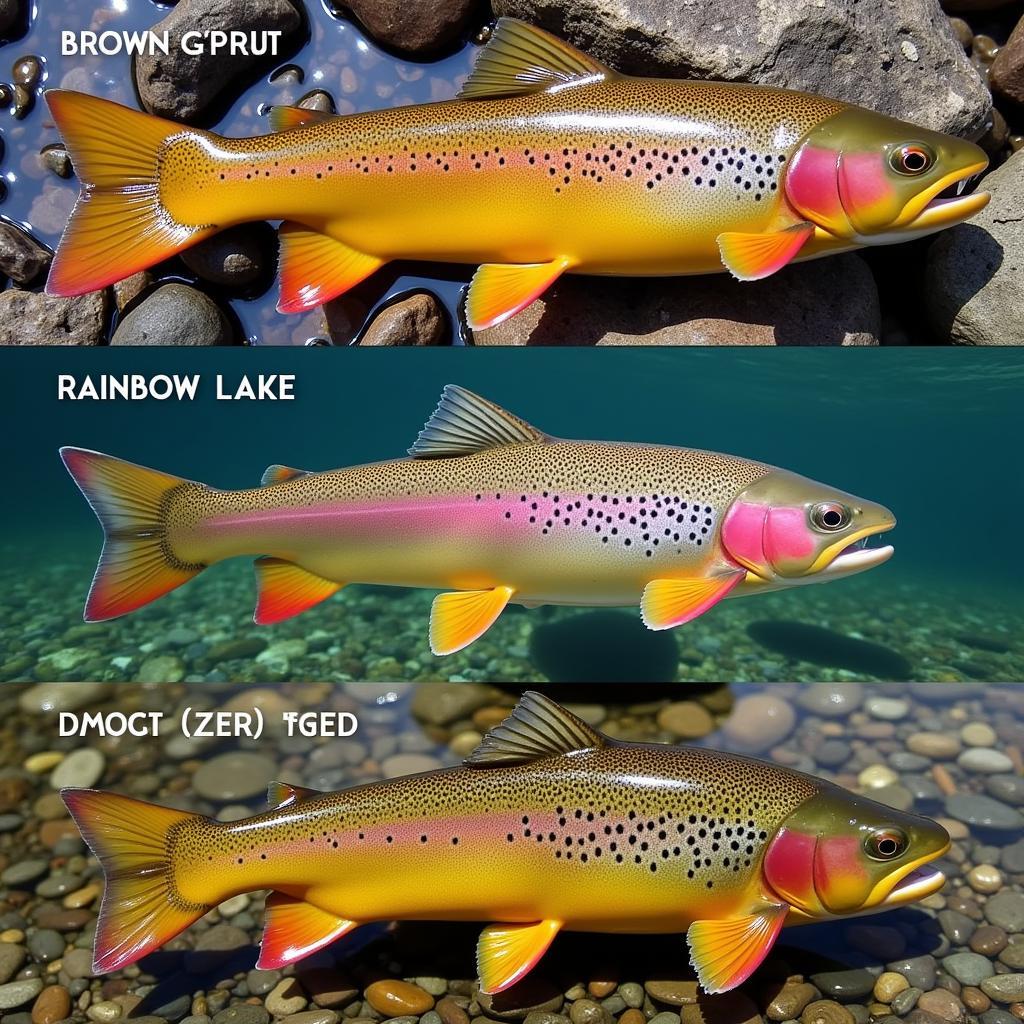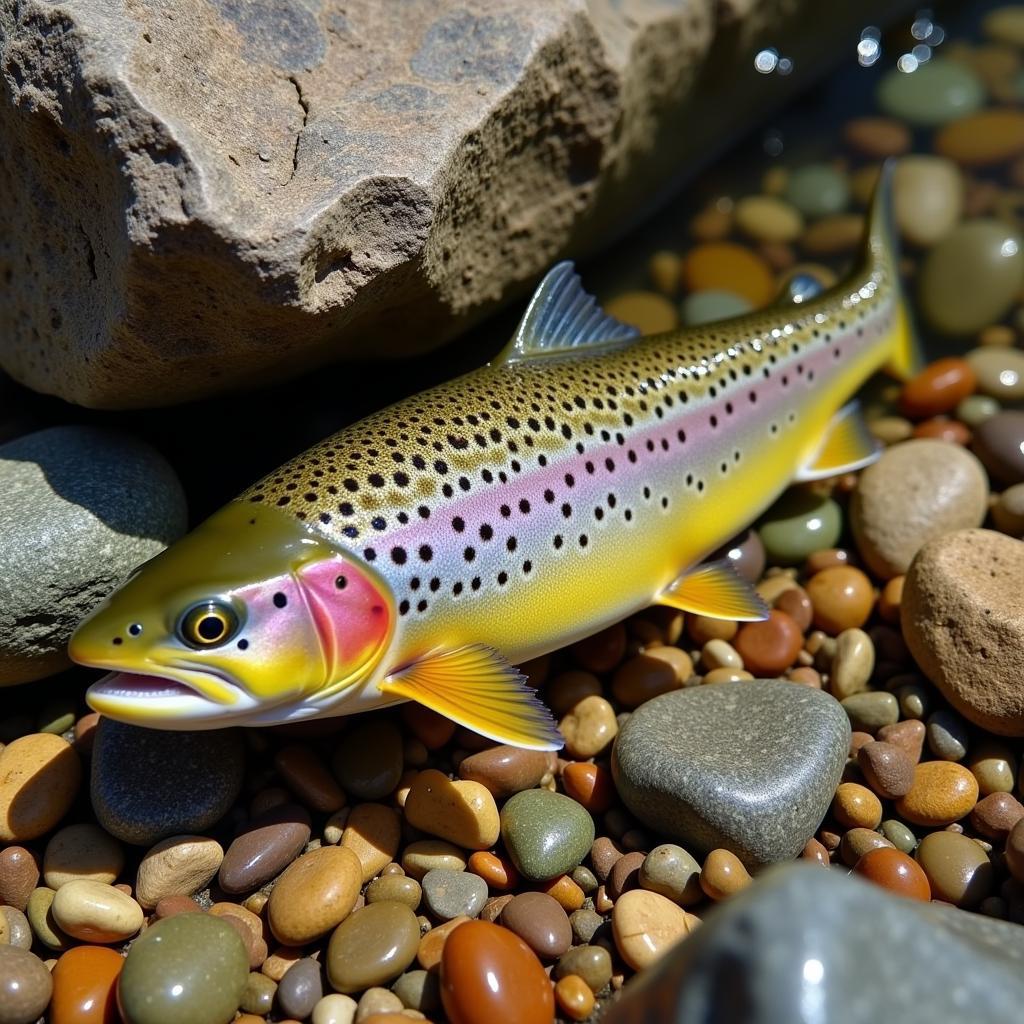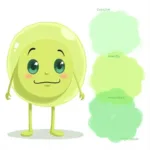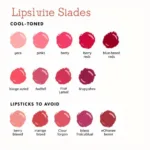Trout, those elusive denizens of freshwater streams and lakes, often blend seamlessly with their surroundings. So, What Color Is Trout, really? The answer, as with much in nature, isn’t straightforward. Trout coloration is remarkably diverse, varying by species, habitat, and even individual fish. It’s a fascinating subject that goes beyond simple aesthetics and delves into the survival strategies of these remarkable creatures. Let’s dive in.
Understanding trout coloration is crucial for anglers hoping to improve their catch rates. Check out our guide on what color fishing line is best for trout to get started.
The Kaleidoscope of Trout Colors: Nature’s Camouflage
Trout display a remarkable array of colors, often a complex blend of patterns and hues designed to camouflage them in their specific environment. This adaptive coloration helps them evade predators and ambush prey. While there’s no single “trout color,” some common features include:
- Dorsal Side (Back): Often darker, ranging from olive green to dark brown, mimicking the streambed or lake bottom when viewed from above.
- Lateral Sides (Flank): Can display a wide range of colors, including yellows, oranges, reds, and greens, often interspersed with spots, vermiculations (worm-like markings), and parr marks (vertical bars). These markings help them blend in with the dappled sunlight and surrounding vegetation.
- Ventral Side (Belly): Typically lighter, ranging from white to pale yellow, making them less visible against the brighter sky when viewed from below.
 Trout Color Variations in Different Environments
Trout Color Variations in Different Environments
Factors Influencing Trout Color
Numerous factors contribute to the specific coloration of individual trout:
Species:
Different trout species boast distinct base colors and markings. For example, brook trout often display vibrant red spots on their sides, while rainbow trout exhibit a characteristic pinkish-red stripe.
Habitat:
Trout living in clear, sunlit streams often exhibit brighter colors than those inhabiting darker, murkier waters. This adaptation allows them to blend seamlessly with their surroundings.
Diet:
The food sources available to trout can also influence their coloration. For example, trout feeding on crustaceans like shrimp can develop a pinkish hue.
Water Clarity and Light:
Water clarity and light penetration play a significant role in trout coloration. In clear water, trout may display more vibrant colors, while in murky water, their colors tend to be more muted. Do trout see color? This ability allows them to perceive their surroundings and adjust their camouflage accordingly. You can also learn more about can trout see color in our dedicated article.
 Trout Camouflage in a River Environment
Trout Camouflage in a River Environment
What Color Are Olives? A Surprising Connection
Interestingly, the question of “what color are olives?” can provide insights into understanding trout coloration. Like trout, olives exhibit a range of colors from green to brown to black, depending on their variety and ripeness. This natural color palette is often imitated in fly fishing lures designed to attract trout.
Expert Insight: Dr. Emily Carter, Aquatic Biologist
“Trout coloration is a testament to the power of natural selection. Their ability to adapt their appearance to their environment is a crucial survival mechanism, allowing them to thrive in a variety of freshwater ecosystems.”
The Colorado State Fish: A Prime Example
The Greenback Cutthroat Trout, the Colorado state fish, offers a perfect example of how coloration varies within a single species. These trout display striking green backs and sides with distinctive red slashes under their jaw. Learn more about what is the colorado state fish in our detailed article.
Conclusion: A Spectrum of Survival
So, what color is trout? The answer is as varied as the waters they inhabit. Their remarkable adaptability and the interplay of genetics, environment, and diet result in a breathtaking spectrum of colors and patterns. Understanding these factors not only deepens our appreciation for these fascinating creatures but also enhances our ability to appreciate the intricacies of the natural world.
FAQs
-
What is the most common trout color? While there’s no single “most common” color, shades of brown, green, and olive are frequently observed.
-
Can trout change their color? Yes, trout can adapt their coloration to some extent based on their environment and diet.
-
Why are some trout brighter than others? Brighter coloration can be attributed to factors like diet, water clarity, and species.
-
How does trout coloration help them survive? Their camouflage helps them avoid predators and ambush prey.
-
Do all trout have spots? No, not all trout species have spots. Some have vermiculations or parr marks instead.
-
What is the purpose of the parr marks on young trout? Parr marks provide camouflage in the shallow, vegetated areas where young trout often reside.
-
How does knowing about trout color help with fishing? Understanding trout coloration can help anglers select the most effective lures and flies.
Need assistance with your next painting project? Contact us at Phone: 0373298888, Email: [email protected], or visit us at 86 Cầu Giấy, Hà Nội. We have a 24/7 customer service team.

